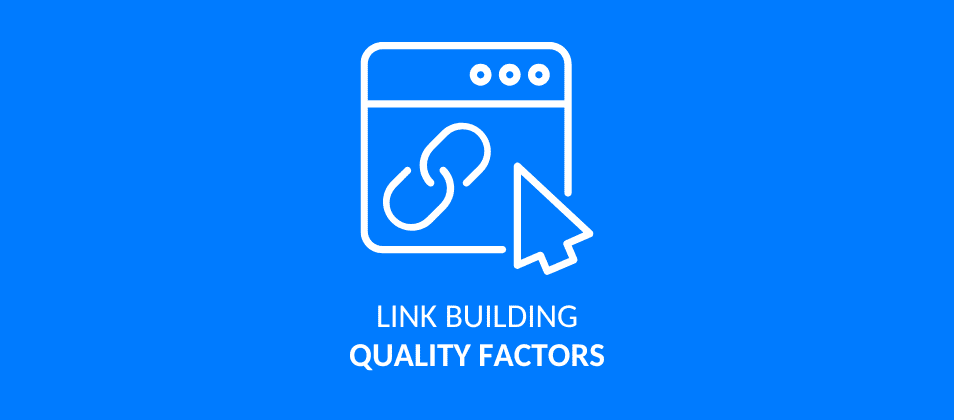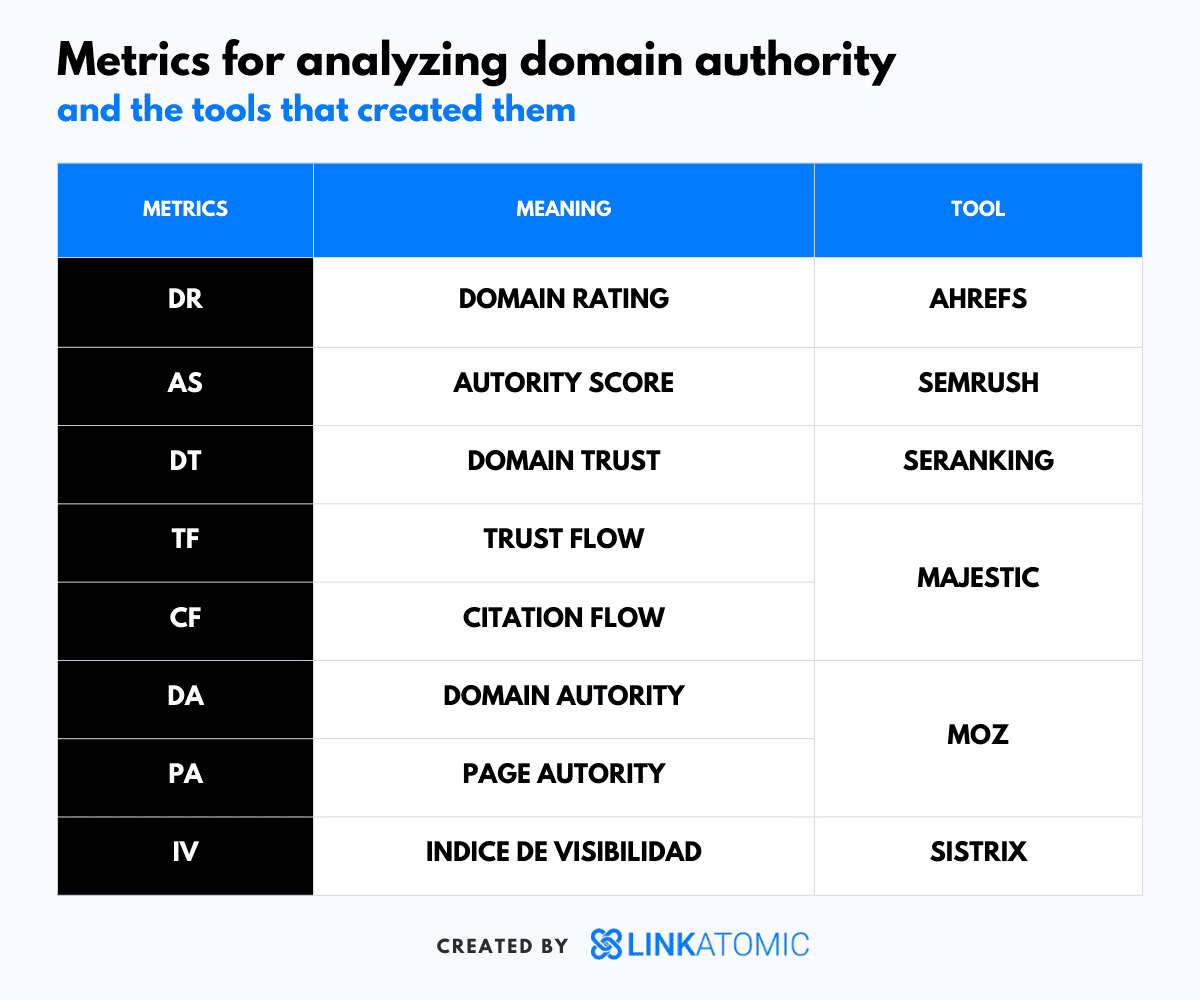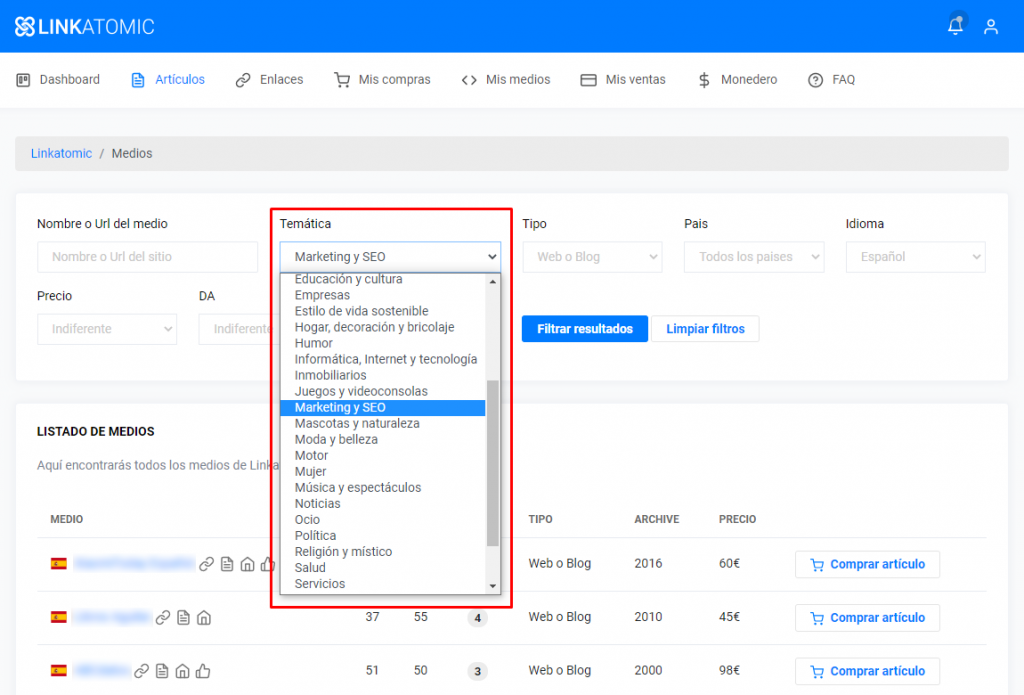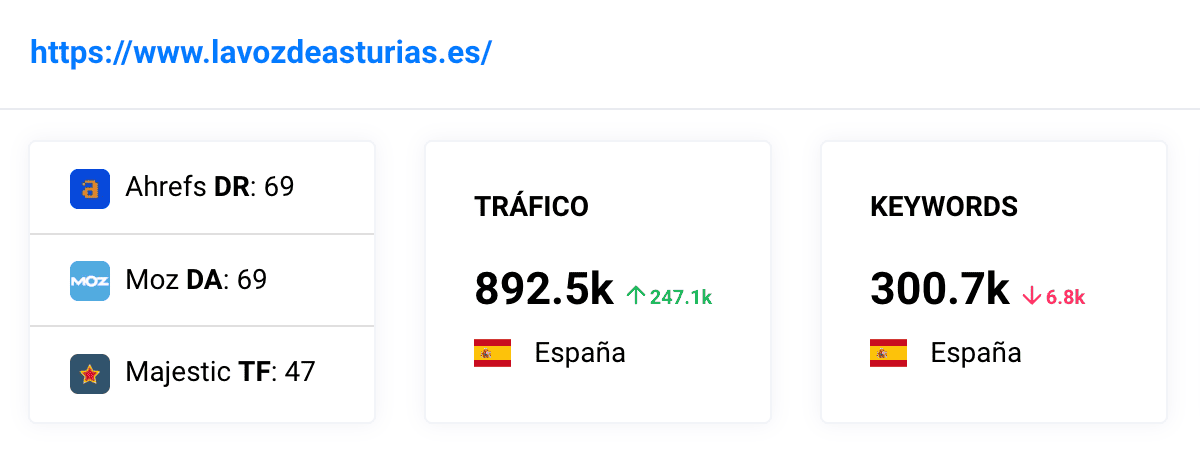What makes a backlink high-quality? 10 factors to keep in mind

If you’re planning to boost your website’s domain authority through off-page SEO, it’s essential to understand what makes a backlink truly high-quality. That’s the only way to ensure your link-building campaign actually delivers results.
Here’s a breakdown of the key factors that influence backlink quality, so you know exactly what to look for and how to strengthen your authority to rank higher.
What makes a backlink high-quality?
There are many factors that influence the quality of a backlink. Some of the main ones include the authority of the site providing the link, its rankings, the placement of the backlink, the number of clicks it receives, and its anchor text.
But those are just a few. To help you understand them better and choose your backlinks wisely, let’s take a closer look at the 10 factors that have the greatest impact on backlink quality.
1. Authority of the website the backlink comes from
The authority of the site giving the backlink is one of the most important link-building metrics, as it largely determines how valuable that backlink will be.

For example, a backlink from Wikipedia is much more valuable than one from a small website, simply because Wikipedia has enormous authority.
In that sense, the backlink would be of much higher quality than one coming from just any random site.
Expert tip
A site’s authority refers to the strength it holds in the eyes of Google and other search engines. It depends on the number of referring domains and backlinks pointing to it.
Most SEO tools have their own way of measuring a website’s authority:
Ahrefs uses Domain Rating (DR). Moz uses the well-known Domain Authority and Page Authority (DA and PA) — the most widely used metrics in the industry. SE Ranking measures Domain Trust and Semrush uses the Authority Score.
Regardless of what each tool calls it, they all generally rely on the same factors: the quantity and quality of backlinks and referring domains.
These are the elements that make websites like Wikipedia, Forbes, or WordLift so powerful.
Therefore, if you want to assess how much authority a website has, you’ll need to pay close attention to the number and quality of its backlinks and referring domains.

Laura García
SEO and Link Building Campaign Manager2. Topical relevance of the backlink
It’s one thing for a backlink to come from a website with strong authority, and another for it to come from a site that’s topically relevant.
The goal should always be to get backlinks that are contextually related to your niche, whether you’re acquiring them through sponsored posts or any other link-building strategy.
In this context, relevance means that the website giving you the backlink should be related to your site’s topic:
If you run a fishing website, backlinks from other fishing or outdoor-related sites will help you much more.
If you have a marketing website, backlinks from other marketing or business-related sites will be far more valuable.

Remember, Google prioritizes relevance, and rewards it.
When your website is mentioned and linked by other sites that already have authority and strong rankings within the same niche, the boost to your own authority, traffic, and rankings becomes much more noticeable.
That’s why a backlink will always be of higher quality when it comes from websites that share your topic or industry focus.
3. Anchor text
The anchor text is the clickable piece of text that contains the link. For your backlinks, anchor text matters because it’s a signal that Google and other search engines use to understand the context of the link.
That’s why backlinks with descriptive, keyword-related anchor text tend to have higher quality than those using generic phrases.
This signal becomes even stronger as you acquire more backlinks. Instead of evaluating just one anchor text, Google will assess many of them, so if they’re well-optimized, they’ll reinforce positive signals toward your website.
That’s one of the reasons why, at Linkatomic, we let you define the anchor texts used in your backlinks, so you can make sure you’re sending the right signals to Google (and now, to AI search as well).
Expert tip
While it may be tempting to use exact-match keywords in all your anchor texts (to directly boost the pages you want to rank), it’s better to keep some variation.
Use partial matches, keyword variations, and related secondary keywords.
Make the anchor text sound more natural and less forced.
This gives your backlink profile a more organic appearance, which helps Google take it more seriously, and ultimately strengthens your site’s authority.

Rubén Vázquez
CEO de Linkatomic4. Content where the backlink is placed
The content in which your backlink appears has a major impact on its quality. If the surrounding content is relevant to the backlink and ranks well on its own, the backlink will be much more valuable
It’s not the same for your backlink to appear in a random, unrelated piece of content as it is to appear in a well-written post on a closely related topic, published on an established blog.
That’s why you should always pay attention to the type and quality of content that accompanies your backlinks, the more relevant and well-crafted it is, the better it will perform.
5. Placement of the link
Not all links carry the same weight for Google. A backlink that appears in a prominent section of a page, such as the navigation menu or near a heading at the beginning of a blog post, will generally be more important and, therefore, higher in quality.
Less prominent links, hidden in parts of a website that Google crawls less often or that are buried deep within the structure, tend to be less valuable because they’re not as visible.
6. Trend of the website providing the backlink
Backlinks coming from websites with a positive growth trend in traffic and rankings are far more valuable than those from sites with a negative trend.
It’s simple logic: a website that’s losing traffic, ranking poorly, or has been penalized by Google is clearly not well-regarded by search engines.
In such cases, a backlink from that kind of site can do more harm than good.
7. Traffic and engagement the backlink receives
Backlinks that attract clicks and user interaction tend to hold more value for Google. When users actually click on a link and engage with it, it signals that the backlink is relevant and trustworthy.
To make sure your backlinks get this kind of engagement, focus on placing them in relevant, high-performing websites capable of ranking well and attracting real visitors to the content where your link appears.
A sponsored post linking to your site that gets no traffic, no visibility, and no engagement is unlikely to add much value to your backlink profile.
8. Geographic relevance of the backlink
Geographic relevance plays a key role in backlink quality, especially if your business needs to rank in specific regions, cities, or countries.
For example, if you offer plumbing services in Madrid and want to do SEO for plumbers, your website’s backlinks should ideally come from sites that are well-ranked in that same region.
This way, your backlinks not only boost your overall authority but also strengthen your local presence, signaling to Google that your website is relevant to that particular city or area.
9. Link profile of the website providing the backlink
Beyond authority, rankings, and topic relevance, the link profile of the website giving the backlink also has a major impact on its quality.
A link profile reflects the overall condition of a website in terms of its backlinks and referring domains.
A website with a healthy link profile receives many high-quality backlinks, has a diverse and relevant set of referring domains, and doesn’t excessively link out to unrelated or low-quality pages.
These are exactly the kinds of sites you want backlinks from, since their backlink situation is seen positively by Google and other search engines.
Conversely, you should avoid backlinks from websites with poor link profiles, those filled with irrelevant backlinks or an excessive number of outbound links, since they can reduce the value of your own link-building efforts.
10. Website ranking and quality
A website that ranks well, is well-maintained, and has top-notch content will provide higher-quality backlinks.
This is because if the site giving you the backlink is already well-ranked and rewarded by Google, the likelihood that search engines will value its links to other websites increases significantly.
That’s why, when looking for backlinks, you shouldn’t just focus on site authority, you should also consider the site’s overall content, rankings, and organic performance over time.

Tools to evaluate these factors
- Linkatomic: Within Linkatomic, you can directly assess the key metrics of any website or media outlet where you could acquire backlinks. This ensures you’re targeting sites that will actually help your website grow.
- Ahrefs: One of the most recognized SEO tools in the industry. Its Site Explorer feature lets you quickly understand the status of any website.
- Semrush: Another industry leader, Semrush allows you to review and analyze any website’s SEO situation. With its data, you can determine which sites will provide quality backlinks and which won’t.
- SE Ranking: A more budget-friendly option, SE Ranking helps you analyze any site to understand how valuable backlinks from it would be.
Ready to boost your website’s authority?
Now that you know what makes a backlink high-quality, it’s time to take action. With Linkatomic, it’s easy, sign up, check out our guide, and start strengthening your website’s authority today.

Author: Otto F. González
Do you need help with your SEO and branded content strategy?
In Linkatomic we offer you 20.000 newspapers and blogs to improve your visibility on the internet.


